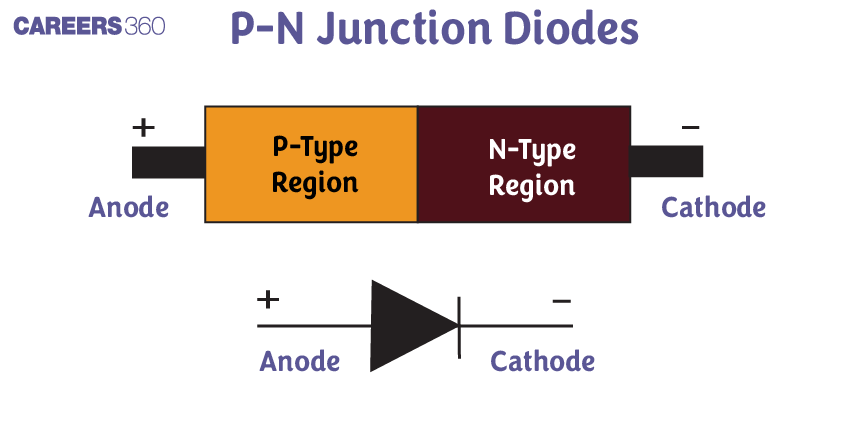Special Purpose P-N Junction Diodes
P-N junction diodes are ubiquitous in everyday electronics, serving as the building blocks for many devices we use daily. However, special-purpose P-N junction diodes are designed to perform specific functions that go beyond the capabilities of standard diodes. These specialized diodes, including Zener diodes, light-emitting diodes (LEDs), and photodiodes, play crucial roles in various applications. For instance, Zener diodes are used for voltage regulation in power supplies, ensuring our electronic devices receive stable voltage levels. LEDs are found in everything from household lighting to display screens, providing efficient and vibrant light sources. Photodiodes, on the other hand, are essential in devices like solar panels and light sensors, converting light into electrical signals. Understanding the unique properties and applications of these special-purpose P-N junction diodes highlights their importance in modern technology and everyday life.
- Special Purpose P-N Junction Diodes
- Recommended Topic Video
- Solved Examples Based on Special Purpose P-N Junction Diodes
- Summary

Special Purpose P-N Junction Diodes
Devices in which carriers are generated by photons are called optoelectronic devices.
The following are important examples of optoelectronic devices.
- Photodiodes to detect optical signals
- Light Emitting Diodes (LEDs)
- Solar cells
Photodiode
A photodiode is a p-n junction that consumes light energy to generate electric current. It is operated under reverse bias.

Reverse bias means that the p-side of the photodiode is connected to the negative terminal of the battery and the n-side is connected to the positive terminal of the battery. It is also sometimes referred to as a photo-detector, photo-sensor, or light detector.
Suppose an optical photon of frequency ν is incident on a semiconductor, such that its energy is greater than the bandgap of the semiconductor ((i.e. hν>Eg ). This photon will excite an electron from the valence band to the conduction band leaving a vacancy or hole in the valence band. This increases the conductivity of the semiconductor.
By measuring the change in the conductance (or resistance) of the semiconductor, one can measure the intensity of the optical signal. Thus, a photodiode can be used as a photodetector to detect optical signals.
Recommended Topic Video
Solved Examples Based on Special Purpose P-N Junction Diodes
Example 1: For LEDs to emit light in the visible region of electromagnetic light, they should have an energy band gap in the range of :
1) 0.1 eV to 0.4 eV
2) 0.5 eV to 0.8 eV
3) 0.9 eV to 1.6 eV
4) 1.7 eV to 3.1 eV
Solution:
For emitting visible light λ should lie between 4000A∘ to 7600A∘
∴Emin=124007600=1.7eV∴Emax=124004000=3.1eV
Hence, the answer is the option (4).
Example 2: Symbolic representation of photodiode is
1)

2)

3)

4)

Solution:
- The photodiode is a special type of PN junction diode made up of photosensitive semiconducting material that generates current when exposed to light.
- It operates in reverse-biased mode and converts light energy into electrical energy.
- The diode has a transparent window to allow light to fall on the diode.

Example 3: Assertion: A P-N photodiode is made from a semiconductor for which Eg=
2.8 eV. This photodiode will not detect the wavelength of 6000 nm.
Reason: A PN photodiode detects wavelength if hcλ>Eg
1) both assertion and reason are true and the reason is the correct explanation of the assertion.
2) both assertion and reason are true but the reason is not the correct explanation of the assertion.
3) assertion is true but reason is false.
4) the assertion and reason are both false.
Solution:
For detection of a particular wavelength (λ) by a PN photo diode, energy of incident light >Eg⇒hcEg>λ
For Eg=2.8eV,hcEg=6.6×10−34×3×1082.8×1.6×10−19=441.9 nm
i.e., hcEq<6000 nm, so the diode will not detect the wavelength of 6000 A.
Hence, the answer is the option (1).
Example 4: If a semiconductor photodiode can detect a photon with a maximum wavelength of 400 nm, then its band gap energy (in eV ) is :
Planck's constant h=6.63×10−34J.s.
Speed of light c=3×108 m/s
1) 3.1
2) 2.0
3) 1.5
4) 1.1
Solution:
For the photodiode to detect E=hcλ>( band gap energy )⇒( band gap energy )max=hc/λmax=6.63×10−34×3×108400×10−9=5×10−19 J=3.1eV
Hence, the answer is option (1).
Example 5: The electrical conductivity of a semiconductor increases when electromagnetic radiation of a wavelength shorter than 2480 nm is incident on it. The band gap in (eV) for the semiconductor is
1) 0.5
2) 0.7
3) 1.1
4) 2.5
Solution:
By measuring the change in the conductance of the semiconductors one can measure the intensity of the optical signal
Electrical conductivity increases when more electrons jump from the valence band to the conduction band. Hence the light must provide energy equal to or more than the band gap.
Band gap hcλ=1240024800=0.5eV
Summary
P-N junction diodes have been designed with specialized uses in mind, other than just rectifying current. Some of these uses include. The first diode is a Zener diode which is used for voltage regulation by maintaining constant voltage across it even if we increase its current. The second diode is known as the Light Emitting Diode (LED) which emits light when current flows through it, they are most appropriate in displays and indicators. Photodiodes are the third kind of diodes and they change light into electricity; it is important to mention that they are commonly applied in optical communication and sensing devices.
Also Read
11 Jan'25 05:47 PM
25 Nov'24 06:23 PM
20 Nov'24 02:59 PM
20 Nov'24 10:57 AM
15 Nov'24 01:49 PM
12 Nov'24 11:20 PM
12 Nov'24 10:24 PM
12 Nov'24 09:39 PM

